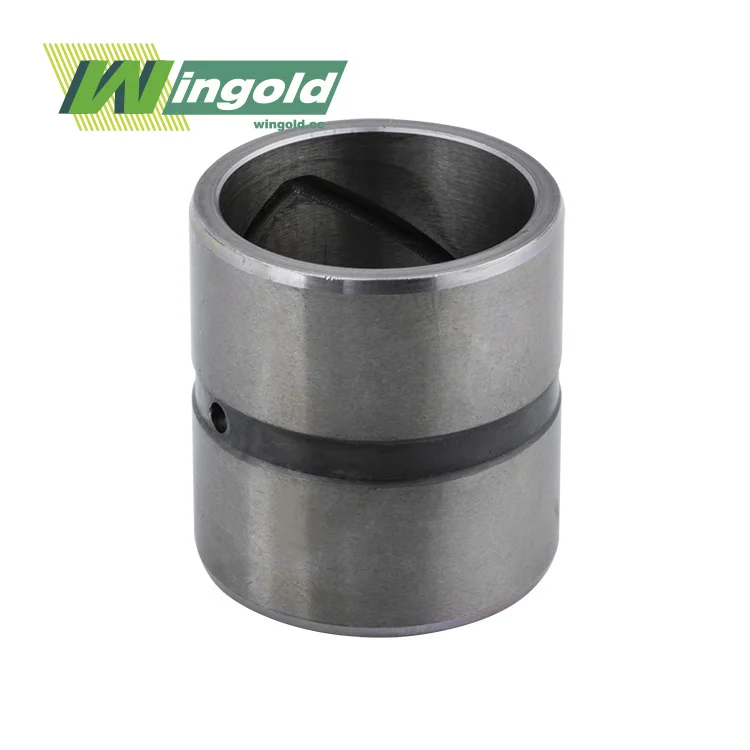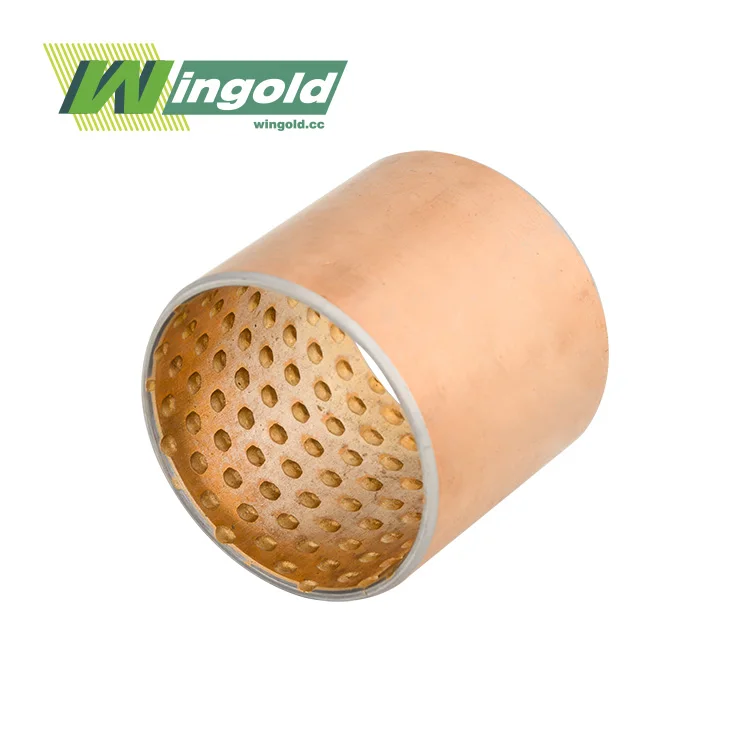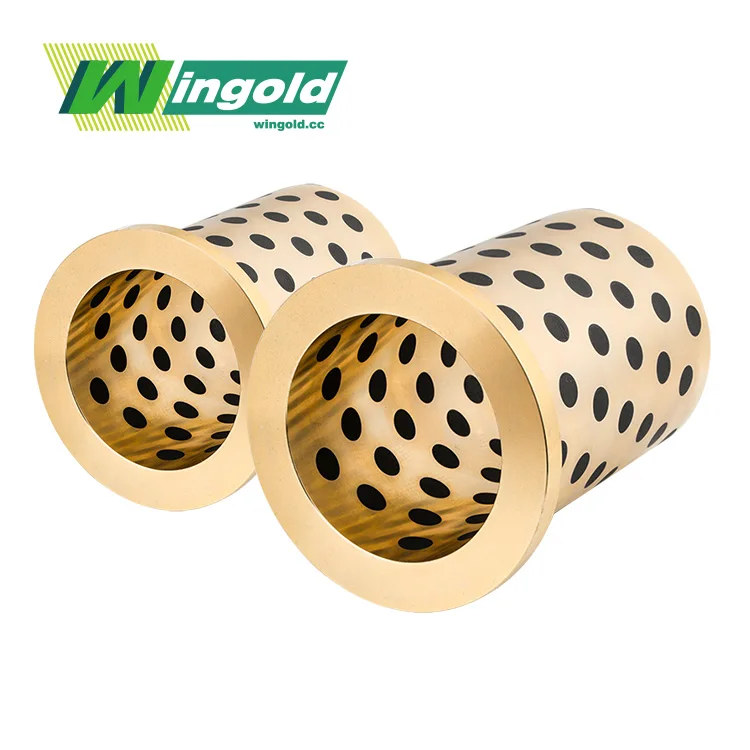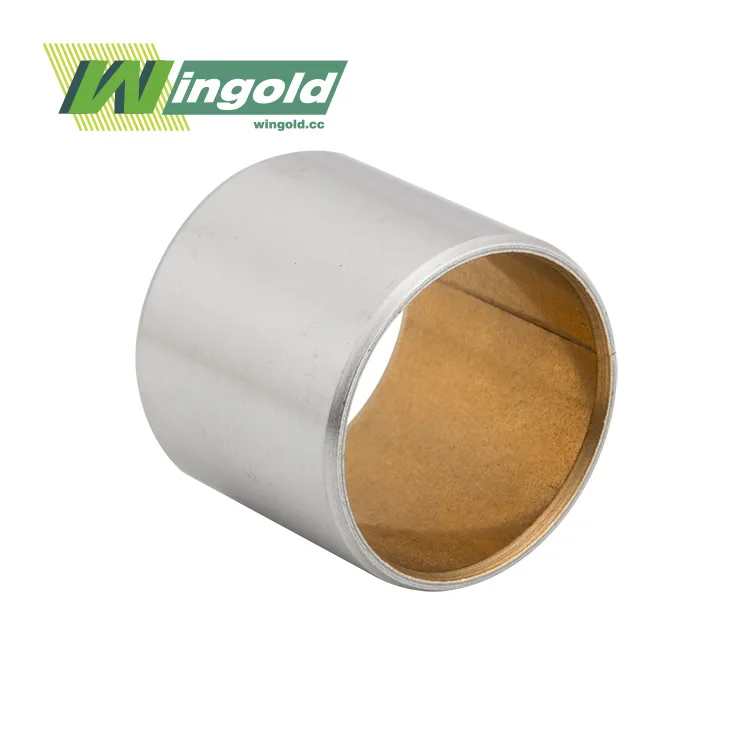
The Science Behind Sintered Iron Bushes in Automotive Applications
Manufacturing Process and Material Properties
Sintered iron bushes are crafted through a sophisticated powder metallurgy process. This technique involves compacting finely powdered iron materials into a desired shape and then heating them to just below the melting point. This sintering process creates a unique porous structure that is fundamental to the bush's performance.
The resulting material boasts a density ranging from 6.0 to 7.2 g/cm³, striking an optimal balance between strength and porosity. This porous nature allows the bush to retain oil, typically 15% to 25% by volume, which is crucial for its self-lubricating properties. The ability to operate across a wide temperature range, from -40°C to 150°C, further enhances their versatility in automotive applications.
Self-Lubricating Characteristics
The self-lubricating nature of sintered iron bushes is perhaps their most revolutionary feature. The porous structure acts as a reservoir for lubricating oil, releasing it gradually during operation. This continuous lubrication significantly reduces friction between moving parts, leading to several benefits:
- Decreased wear and tear on components
- Reduced heat generation
- Improved energy efficiency
- Extended component lifespan
In automotive applications, these benefits translate to smoother operation, reduced maintenance requirements, and improved overall vehicle performance.
Dimensional Stability and Load-Bearing Capacity
Sintered iron bushes exhibit exceptional dimensional stability, maintaining their shape and size even under high loads and varying temperatures. This stability is crucial in automotive applications where precise tolerances are essential for optimal performance.
Moreover, these bushes boast impressive load-bearing capacity. They can withstand high stresses without deformation, making them suitable for use in critical components such as engine mounts, suspension systems, and steering mechanisms. This robustness contributes to the overall reliability and durability of automotive systems.
Transformative Applications of Sintered Iron Bushes in Automobiles
Engine Components
In the heart of the automobile, the engine, sintered iron bushes play a pivotal role in enhancing performance and efficiency. They are extensively used in various engine components, including:
- Camshaft bearings
- Connecting rod bushings
- Valve guides
- Timing chain tensioners
In these applications, the self-lubricating properties of sintered iron bushes significantly reduce friction, leading to improved fuel efficiency and reduced emissions. Their ability to withstand high temperatures and maintain dimensional stability under extreme conditions ensures reliable engine performance over extended periods.
Transmission and Drivetrain
The transmission system, responsible for transferring power from the engine to the wheels, also benefits greatly from sintered iron bushes. They are commonly used in:
- Gear shift mechanisms
- Clutch release bearings
- Differential gears
- Driveshaft supports
In these applications, the bushes' self-lubricating nature ensures smooth operation and reduces wear, leading to more efficient power transmission and extended transmission system life. The reduced friction also contributes to improved fuel economy and a more enjoyable driving experience.
Suspension and Steering Systems
Sintered iron bushes have revolutionized suspension and steering systems, enhancing vehicle handling, comfort, and safety. They are widely used in:
- Control arm bushings
- Shock absorber bushings
- Steering rack bushings
- Stabilizer bar bushings
In these applications, the bushes' ability to absorb vibrations and maintain dimensional stability under varying loads contributes to improved ride quality and more precise steering control. Their durability and resistance to environmental factors like moisture and road salt also lead to reduced maintenance needs and extended component life.
Environmental and Economic Impact of Sintered Iron Bushes in the Automotive Industry
Reduced Environmental Footprint
The adoption of sintered iron bushes in automotive applications has significant environmental benefits. Their self-lubricating nature eliminates or reduces the need for additional lubrication, leading to:
- Decreased use of petroleum-based lubricants
- Reduced risk of lubricant leaks and environmental contamination
- Lower emissions due to improved fuel efficiency
Furthermore, the extended lifespan of components using sintered iron bushes means fewer replacements and less waste generation over the vehicle's lifetime. This aligns well with the automotive industry's push towards more sustainable and environmentally friendly practices.
Cost-Effectiveness and Economic Benefits
From an economic perspective, sintered iron bushes offer substantial benefits to both manufacturers and consumers:
- Reduced production costs due to simplified assembly processes
- Lower warranty claims and reduced recall risks due to improved component reliability
- Decreased maintenance costs for vehicle owners
- Improved fuel efficiency leading to cost savings for drivers
These economic advantages make sintered iron bushes an attractive option for automotive manufacturers looking to balance performance, durability, and cost-effectiveness.
Future Prospects and Innovations
The future of sintered iron bushes in the automotive industry looks promising. Ongoing research and development are focused on:
- Enhancing material properties for even better performance
- Exploring new applications within vehicle systems
- Developing advanced manufacturing techniques for improved precision and efficiency
- Integrating smart technologies for real-time performance monitoring
As vehicles continue to evolve, particularly with the rise of electric and hybrid technologies, sintered iron bushes are expected to play an increasingly crucial role in optimizing performance, efficiency, and sustainability.
Conclusion
Sintered iron bushes have undeniably revolutionized automotive performance, offering a unique combination of self-lubrication, durability, and cost-effectiveness. Their wide-ranging applications across various vehicle systems have led to significant improvements in efficiency, reliability, and environmental sustainability. As the automotive industry continues to evolve, the role of sintered iron bushes is likely to expand further, driving innovations in vehicle design and performance. For those seeking to leverage the benefits of sintered iron bushes in their automotive applications, Wingold Bearing offers expert solutions tailored to specific needs. To explore how our sintered iron bushes can enhance your automotive projects, please contact us at info@wingold.cc.
FAQ
What makes sintered iron bushes superior to traditional bushings?
Sintered iron bushes offer self-lubrication, higher wear resistance, and better performance under extreme conditions.
Can sintered iron bushes be used in high-temperature automotive applications?
Yes, they can operate effectively in temperatures ranging from -40°C to 150°C.
How do sintered iron bushes contribute to vehicle fuel efficiency?
They reduce friction in various components, leading to less energy loss and improved overall efficiency.
Are sintered iron bushes suitable for electric vehicles?
Absolutely. Their properties make them ideal for various applications in electric vehicle powertrains and suspension systems.



